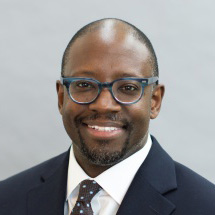Over at the Hechingerreport.com, Sarah Garland wonders how we can move toward ending “racial inequality in gifted education” programs. Garland laments the following:
Gifted and talented programs have been the target of criticism ever since the concept took hold in the 1970s as huge demographic changes were transforming urban school districts. White, middle-class families were fleeing to the suburbs. Like magnet schools, accelerated programs for gifted students were attractive to many of these families and provided a way to counteract this flight and maintain diversity in city school systems. The problem was that gifted programs tended to foster racial separation inside schools, undermining the very goal they were supposed to support.
Today, gifted programs still tend to separate students by race. New York City is a case in point. There, the education department has been struggling for years to change the demographic makeup of its gifted program—which is disproportionately white and Asian—and spread access to a more representative group of students. There are a handful of open-enrollment gifted schools in the city, but the district’s efforts at increasing diversity in the bulk of gifted and talented classrooms have largely backfired.
Why is this surprising? Of course these programs backfired. Of course gifted programs in New York City are primarily comprised of Asian and white students. Of course attempts to socially engineer gifted programs have failed. What else would we expect in a world where the most important predictor of education success and achievement is the structure of the family?
Christine Kim, of the Heritage Foundation, presents compelling data in this area. According to Kim, studies show that children raised in intact families, i.e., with two continuously married parents, tend to fare better on a number of cognitive, emotional, and behavioral outcomes than children living in other family forms. For example, “Children aged three to 12 who live in intact families have higher average math scores than peers whose mothers live in cohabiting relationships.”
Moreover, “among middle school and high school students, the portion of childhood spent in a single-parent family is associated with declines in GPAs over time; and living in a single-mother family with a cohabiting partner is associated with a greater likelihood of suspension or expulsion from school at a later time.” These are just a few data points to make the case that many of us have been making for years: education “inequality,” in terms of performance, is derivative of the breakdown of the family. Currently, 73% of African American children are born outside of marriage compared to 29% for whites and 17% for Asian Americans. Garland should not be surprised by her findings.
In the causal discussion, some will look at family income as reason for Asian American and white dominance in gifted programs but, again, that too is derivative of family structure. Two-parent households have higher incomes, assets, and resources than single-parent and non-married households. While Garland is asking good questions about obvious disparities, her article misses the fact education performance will continue to decline as long as sustainable family structure is undermined. So, the moral of the actual story is simply this: if we want more diversity in gifted programs, marriage rates among black parents will need to increase (and that’s a moral problem).

